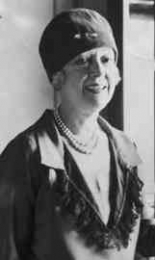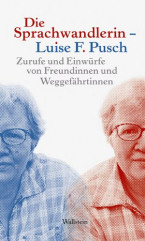
born on December 20, 1865 (or 1858), New York City, United States
died on July 12, 1950, Versailles, France
American interior designer and decorator
75th anniversary of her death on July 12, 2025
160th birthday on December 20, 2025
Biography
“Her sense of proportion was infallible. She certainly made mistakes in many things, but she was physically incapable of erring in matters of taste. She was therefore always – and seemingly effortlessly – perfectly dressed. The simple cotton skirt she wore became a poem, the scarf she threw over her shoulders an inspiration.”
This is how Elisabeth Marbury, a literary agent, described Elsie de Wolfe, the interior designer who was her long-term companion, in her autobiography My Crystal Ball.
Elsie de Wolfe was the only daughter among the five children of Georgina and Stephen de Wolfe. Her father was a capable and popular doctor who unfortunately had a passion for gambling that consumed most of the family's money; they were forced time and again to move into cheaper apartments. Later the successful interior designer was to cite the ugliness of these apartments as the cause of much agony for her as a child.
At the age of 14, Elsie was sent to live with Scottish relatives. Thanks to their excellent connections, she was presented at court to Queen Victoria and then accordingly welcomed into London society. One of the many contacts she made in London was with the actress Cora Urquhart Potter who took Elsie under her wing and introduced her to the world of theater.
After her return to New York at the age of 19, she began acting in private charity events, where she met and fell in love with Elisabeth Marbury, a literary agent. In 1885, Elisabeth and Elsie moved in together; from 1887 they lived in the house on Irving Square in New York that Elsie had remodeled beautifully. She had the house painted a bright yellow and the shutters a deep green – in stark contrast to the brownstones of the neighborhood. In 1890, when Elsie’s father died, she inherited very little and had to earn her own living. She worked as an actress for the following ten years but met with only modest success; Elisabeth therefore encouraged her to turn her hobby of interior design into a career.
The plan was a success. Thanks to lucrative commissions from affluent friends, Elsie de Wolfe was soon a wealthy woman. Starting in 1912, she published her ideas on interior decoration in magazine articles, and they were compiled into a book the following year. The House in Good Taste was a bestseller that continues to influence the design choices in sophisticated American homes to this day.
Interior design and decoration had been a purely male domain until then; de Wolfe was the first woman in the profession, and she immediately defined it as a genuinely female domain for the rest of the century. She put an end to the plush opulence of the Victorian style by allowing light to flood into sparsely furnished rooms where many mirrors enhanced the light and airy effect. De Wolfe remarked that she had “opened the doors and windows of America, and let the air and sunshine in.” She believed each room should form a visual unity down to the last detail. The individual ingredients could well result in a stylistic mix – but each of the elements should reflect the basic concept of the room.
De Wolfe and Marbury often spent time Europe; they loved France. A dilapidated villa they had purchased in 1903 in Versailles was restored to its former magnificence by Elsie and the couple spent their summers in France in the Villa Trianon. They were often joined by Anne Morgan, with the couple forming a ménage à trois to include the millionaire heiress and philanthropist who had fallen passionately in love with Elisabeth. All three women actively helped their host country during the war. De Wolfe worked in a field hospital for gas-burn victims and was awarded the Croix de Guerre and in 1922 became “chevalier” of the Legion of Honour for her efforts.
She remained in France after the war ended. In 1926, she entered into a marriage of convenience with Sir Charles Mendl, the British embassy attaché who was seven years her junior (Elsie was not very precise about her year of birth; at the reading of her will, her date of birth was stated as 1858 – which would have made Sir Charles 14 years younger). As Lady Mendl, she was a popular hostess for artists and writers in interwar Paris. Elisabeth Marbury died in 1933; de Wolfe was her sole heir.
Suffering from severe arthritis in later years and confined to a wheelchair in the end, de Wolfe spent the war years of 1939-45 with her husband in Hollywood. From 1946, she lived alternately in Beverly Hills and in her beloved Villa Trianon, where she died on July 12, 1950, probably at the age of 91 (not 84).
(Text from 2004; translated with DeepL.com; edited by Ramona Fararo, 2025. Please consult the German version for additional information, pictures, sources, videos, and bibliography.)
Author: Luise F. Pusch
If you hold the rights to one or more of the images on this page and object to its/their appearance here, please contact Fembio.



